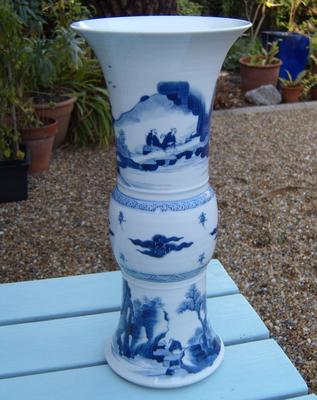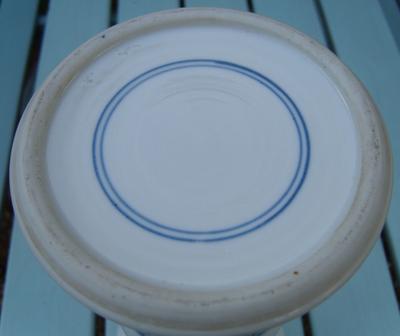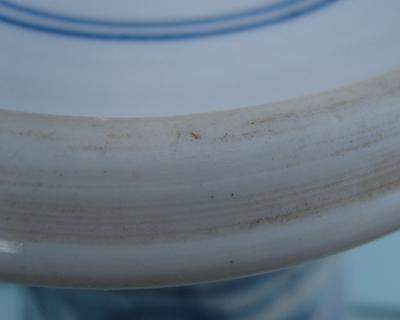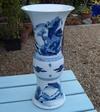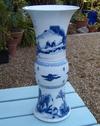Commenting is deactivated.
Please post all new topics and queries to the
Discussion Forum
Help please Chinese blue & white beaker vase identification
by Barry
(UK)
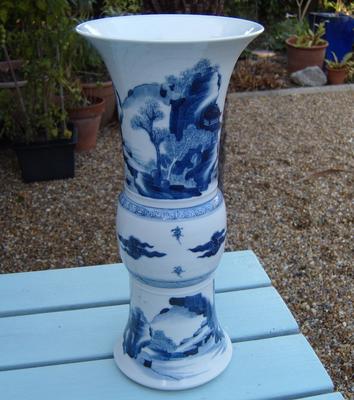
Hi Peter,
This fine blue and white beaker vase has many attributes to Kangxi vases but would really appreciate your trained eye to give an opinion as to a period or date.
The features which I feel align the vase to Kangxi are the neat rounded footrim form being finely levigated and marble smooth to the touch. The slight concave nature to the inner side of the footrim. A neat finish to the glaze at the footrim.
The thin white glaze which clearly shows the potters hands have created it. The precise and deliberate painting of the banding either side of the middle bulge.
The painting and shading of the blue rocks, mountains and trees. The water depicted with horizontal lines.
The hues of the blue on all the Kangxi porcelain I have handled has varied from sapphire to dark blues. Quality is also varied. Now my opinion is not a Kangxi vase, how can it be there is no damage, not a chip. Although I have seen and handled Kangxi without damage at top auction houses. So is it 19th century or later?
I am learning about Chinese porcelain but must admit to really knowing much more about 18th century English porcelain and pride myself at recognizing factories and dating it to within a few years quite easily. Quality changed over very short periods of 5 to 10 years.
Many thanks Barry
Comments for Help please Chinese blue & white beaker vase identification
|
||
|
||
|
||
